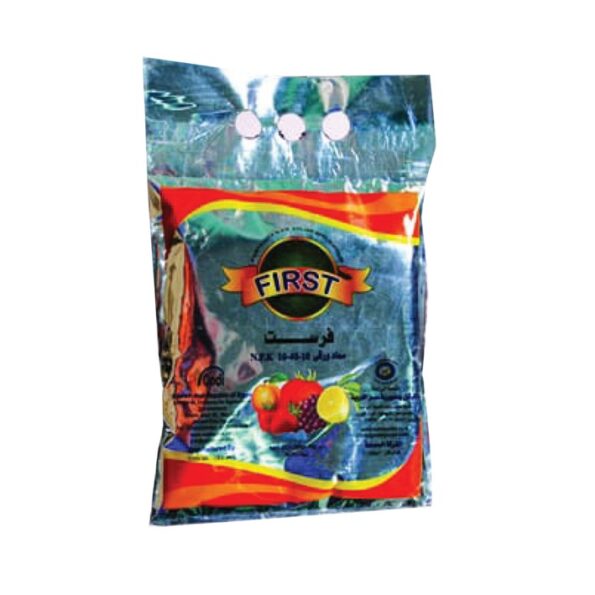
First
1.00EGP 0.00EGP
First
Installation
Nitrogen, 10%
: Phosphorus (P)
: 10 Potassium (K)
Compound benefits
First contains the elements nitrogen, phosphorus and potassium in pure and easily absorbed forms, so it increases the vegetative and flower systems.
. First contains a high concentration of phosphorus, so it is characterized by...
1- Increases the amount of flowers and knots
2- Activates the formation of roots
3-. It helps plants bury it in case of frost
4- It helps adjust the spray solution
5- Increases plant energy
Dosage and rate of use:
First is added at a rate of 1-3 g/liter of water
Based on 0 reviews
|
|
|
0% |
|
|
|
0% |
|
|
|
0% |
|
|
|
0% |
|
|
|
0% |
Related products
Installation:
Nitrogen :13%
Potassium: 46%
A fertilizer rich in potassium in the purest and most powerful form of potassium for absorption, which is the form of potassium nitrate. The (Elec) product is distinguished by containing potassium nitrate with a purity of 99.9%. Therefore, the compound is used as a spray on the shoots or ground fertilization to help hold the flowers and size the fruits.
Fertilizer (Potassium Alic) provides additional benefits including
High purity and low percentage of salts. – Humidity level is low. – Low acidity, rapid flow. – Rapid dissolution
– High percentage of nitrogen and potassium
Potassium nitrate (Potassium Alec) is easy and safe to use on crops, flowers, vegetables, strawberries, plants (indoor and outdoor), teak, potatoes, fruit trees, grapes, citrus fruits, pineapples, cotton, bananas, mangos, olives, tomatoes, potatoes, home gardens and green spaces.
يوفر اليك K Many positive effects such as, increased root growth, improves drought resistance, reduces water loss and wilting, improves winter cold resistance and improves resistance to pests and diseases.
chemical composition
Nitrogen:12%
Calcium: 20%
Compound features
Calcium nitrate: A liquid fertilizer that contains calcium in the form of calcium nitrate. Therefore, it is an easy-to-absorb fertilizer for plants and treats calcium deficiency.
Liquid calcium nitrate fertilizer is used through modern irrigation methods, as well as sprayed on the leaves*
The importance of calcium for plants
Calcium plays a major role in the process of assimilation of enzymes and neutralizing the acidity of the alkaline solution
Calcium plays a major role in resisting some diseases that affect plant leaves by nourishing the cell walls
Calcium gives good characteristics to fruits in terms of shape, storage and marketing
Usage rates
Ground use: from 10:2 liters/acre, depending on age and type of crop
Foliar use: 2-3 cm/liter of water during the vegetative, flowering and fruiting growth stages
Installation:
Total nitrogen
Ammonium nitrogen
Nitrate nitrogen
Phosphorus
Benefits of the Hyperroute vehicle:
A new combination of a group of vitamins, organic, amino and carboxylic acids, as well as a high concentration of phosphorus, which facilitates absorption and has a small molecular size. Therefore, complete absorption of the phosphorus element occurs, and the concentration of phosphorus within the plant increases, thus increasing the carrot total, and the results appear quickly after use.
Hyperroot is characterized by containing free phosphorus that is easy and quickly absorbed, and the organic, amino, and carboxylic acids act as a chelating substance, so it can be used in the flowering and setting stages.
Dosage and usage rates
In case of root activation: 2 liters/acre and repeated
In case of flowering: 5 liters/acre and repeated
Foliar spraying: 202 cm/liter of water
Installation
Nitrogen:10%
phosphorus:5%
Potassium: 25%
Magnesium: 1%
Compound benefits
Safety potash fertilizer is characterized by containing nitrogen without borate
Phosphorus is easily absorbed, and potassium is in a high percentage (potassium nitrate) in its pure form
Easy to absorb, as it is loaded with a high percentage of amino acids, monosaccharides, and carboxylic acids that accelerate and facilitate the absorption of macro and micro elements through the leaves.
Safety Potash is characterized by the presence of a high percentage of potassium, which facilitates absorption
Potassium plays an important and significant role in transporting nutrients to and from the cell. It also helps absorb water, which increases the size of the fruits and the speed of their ripening.
Safety Potash contains amino acids that help the plant produce a high concentration of hormones and enzymes and reduce the effect of stress on the plant.
Safety potash fertilizer contains microelements in a high percentage that helps in treating the deficiency of elements in plants. Zinc and magnesium also have a major enzymatic role that increases plant immunity.
Usage rates
Times of use: Drip irrigation, foliar spray per 100 liters of crop water
3-5 times 1 liter/acre 50-150 cm vegetables
4-6 times 1-2 liters/acre 50-200 cm of fruit
Installation:
26.1%: phosphorus
22.7%: potassium
Compound features
Anti fertilizer is fast absorbed because the elements carry amino acids, carboxylic acids and monosaccharides. The compound is characterized by the presence of phosphorus in two forms: Phosphate as nutrition and phosphate as prevention and treatment of: Fungal diseases such as: Downy mildew and mealybug diseases in onions Cucumber Cantaloupe Grapes
3- Diseases of the fungus of Fitunshra such as: late blight in potatoes and tomatoes
2- Diseases of pythium fungi and fusarium on: seedlings of vegetables and fruits (root rot).
It also contains potassium and also zinc and magnesium, so the Ante compound has a major role in the plant, especially in raising plant immunity, and also works Ante fertilizer to raise the efficiency of the flowering process, nodes, growth and development of fruits in different crops, which increases the size of the crop and quality in terms of color, shape and taste
Dosage and rate of use:
Fertilization (root rot) immediately after seedling and 500 cm / acre
. Fertilization ( Niol Fusarium ) : liter / acre .
Spraying (fungal infection such as downy mildew, mealybug and pollin): 500 cm / 200 liters of water
94 in stock
Installation:
Ammonium nitrogen: 1.36%
Nitrate nitrogen: 8.45%
Calcium: 10%
Total nitrogen: 10%
Compound features:
Supercalcium carbonate: an energy compound that works to liberate calcium so that it becomes a cation
Which facilitates and accelerates its rapid absorption and entry into the plant. Also, the presence of the element in the form of a free cation makes the element work within the plant in functional tasks quickly, which reduces calcium deficiency and prevents the appearance of symptoms of calcium deficiency on the plant. Supercalcium chloride increases the plant's immunity against fungal infection.
Supercalciumporer (salt repellent)
The presence of the calcium element in the compound in the form of a free cation facilitates and accelerates the association of the calcium element with chlorine and the expulsion of the sodium element, which is washed through the irrigation water.
Compound benefits
FunsoHumic is a fertilizer that contains phosphorus in two forms: Porea Novsoric, the first is phosphate for nourishment and stimulating the roots and the second is for protecting against root organs. The compound also contains a high percentage of humic to stimulate the roots.
Phosphohumic is a fertilizer rich in potassium. It is a source of potassium phosphate and potassium humate. Therefore, phosphohumic helps in developing a strong plant.
Usage rates: kg of randan after transplanting.
99 in stock
chemical composition:
Nitrogen: 5%
Magnesium: 8%
Compound features:
Magnesium nitrate: A liquid fertilizer that contains magnesium in the form of magnesium nitrate. Therefore, it is an easy fertilizer for plants to absorb and treats magnesium deficiency.
Liquid magnesium nitrate fertilizer is used through modern irrigation methods, as well as sprayed on the leaves
The importance of magnesium for plants
It is included in the synthesis of chlorophyll and participates in the movement of phosphorus in plants and in the exchange of carbohydrates
It affects the oxidation and reduction activity, and magnesium is included in the synthesis of the organic compound, which is considered the basic reserve of phosphorus
In case of magnesium deficiency, the chlorophyll content in the green parts of the plant decreases, and yellowing develops between the veins of the leaf, and the veins remain green.
A severe deficiency in the element magnesium leads to the marble appearance of the leaves, their twisting and yellowing, and the deficiency of this element appears on leafy crops in poor sandy and subsandy soils with an acidic reaction.
Usage rates
Ground use: from 3:1 liters/acre, depending on age and type of crop
Foliar use: 2-3 cm/liter of water during the vegetative, flowering and fruiting growth stages
A distinct compound because it contains the element magnesium in the form of magnesium nitrate, which is one of the best forms ever through which magnesium is absorbed into the plant.
Compound features
Magnesium plays an important role as it acts as an activator for some enzymes responsible for transporting phosphorus in the metabolism process.
Magnesium is involved in the synthesis of proteins and is considered the primary color and central element of the chlorophyll molecule. Therefore, it is essential in the process of photosynthesis and thus increases production rates and raises the quality of crops.
. Magnesium is the primary regulator of potassium absorption within the plant and acts as a waxy layer on the plant's fruits
– The presence of nitrogen for protein formation within the plant
- It works to increase crop productivity
Usage rates
Foliar spraying: 3-5 g per liter or according to the fertilization program
Ground fertilization: 3-5 kg per acre or according to the fertilization program
Installation:
Free amino acids: 45%
Nitrogen:20%
Compound benefits
Nitroaminofertilizer in the form of a paste contains a high percentage of amino acids and nitrogen in a free form that is easily absorbed by all vegetable and fruit crops to stimulate metabolism and increase plant energy.
Nitroamino is characterized by providing the binding energy between amino acids necessary to bind together amino acids, enzymes, and carbohydrates, thus increasing their concentration within the plant.
Nitroamino reduces the effect of stress resulting from high temperature or frost
Nitroamino significantly increases vegetative, flowering and fruit growth, as it helps in the formation of auxins and hormones responsible for the elongation process in the stems, as well as the growth of buds and the formation of flowers and nodes.
Tetroamino significantly increases per-acre production
Dosage and rate of use:
Nitroamino is added at a rate of 1-2 g/liter of water


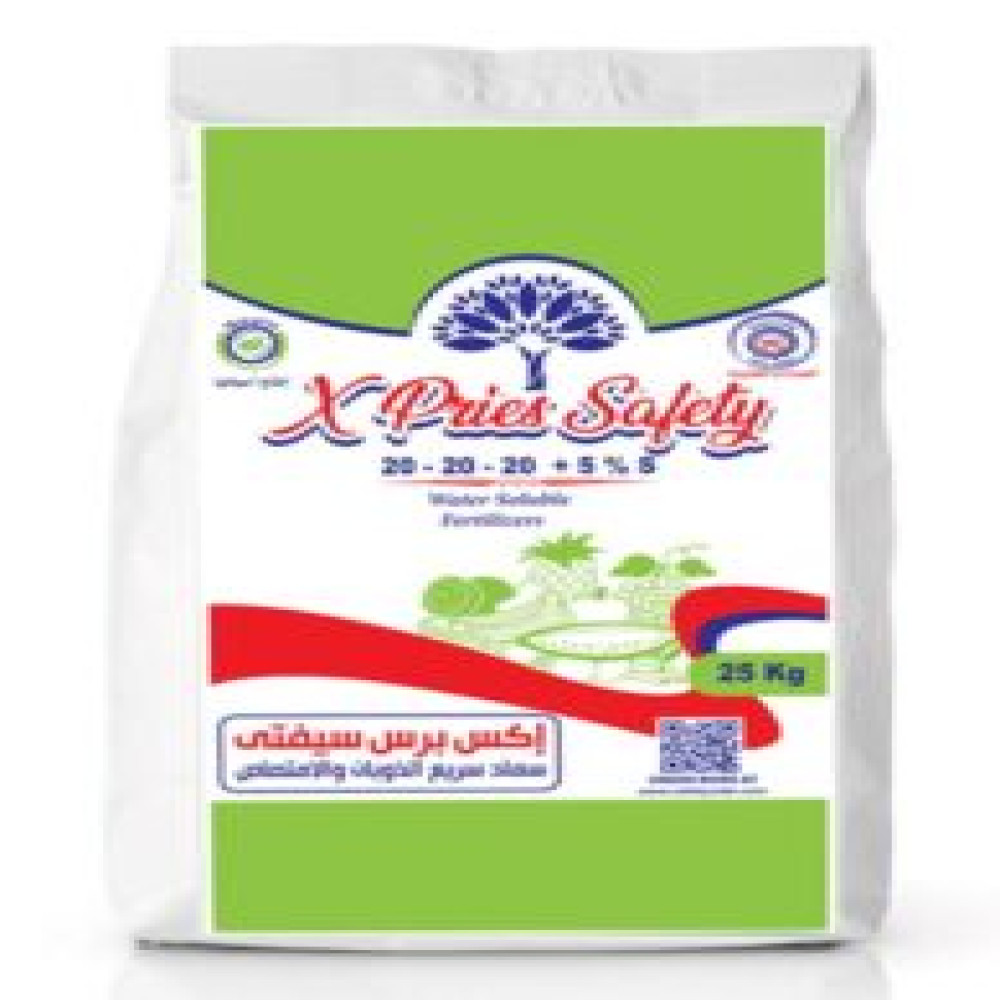
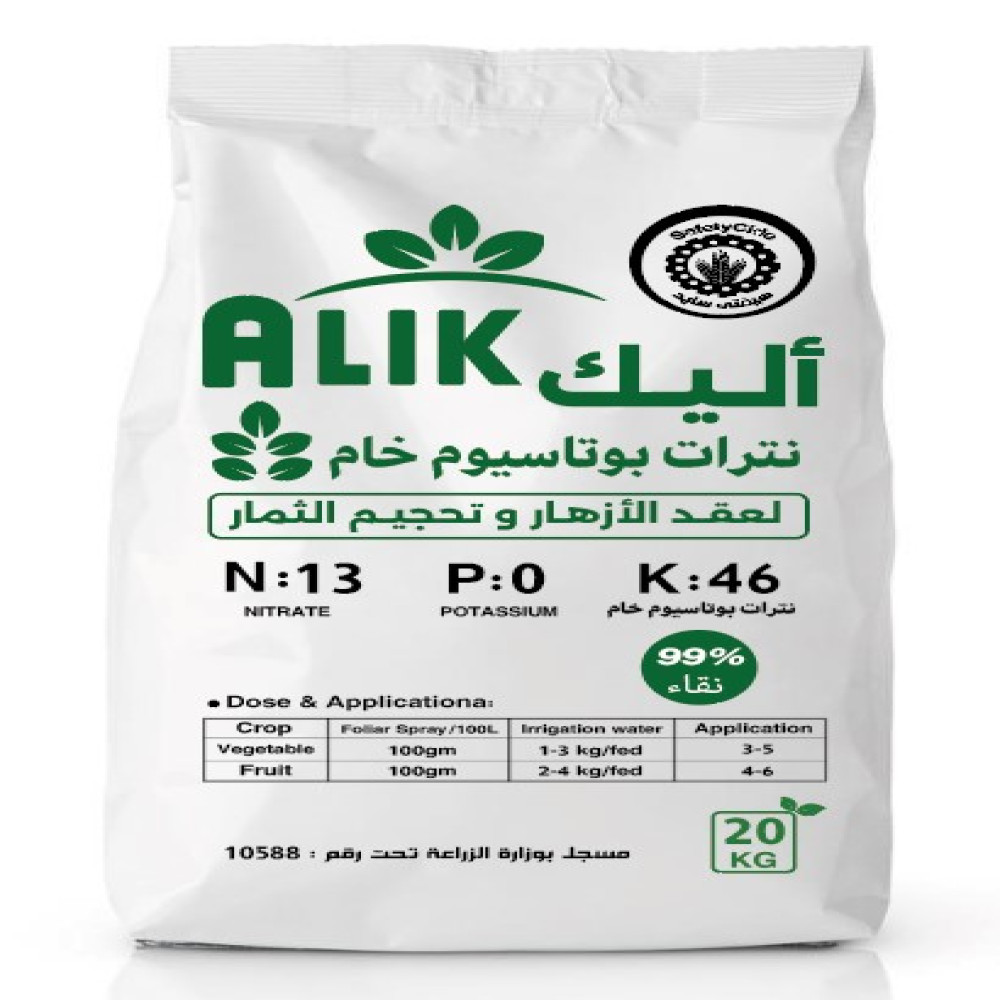


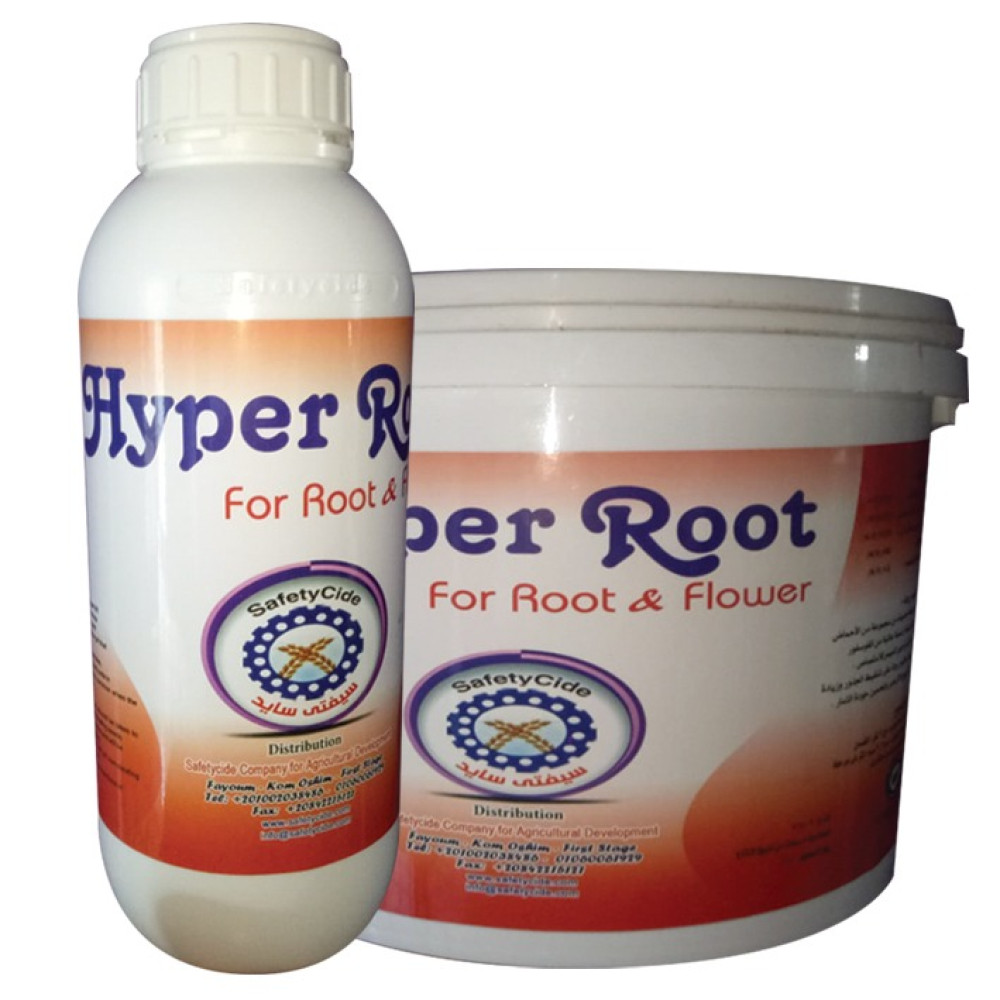

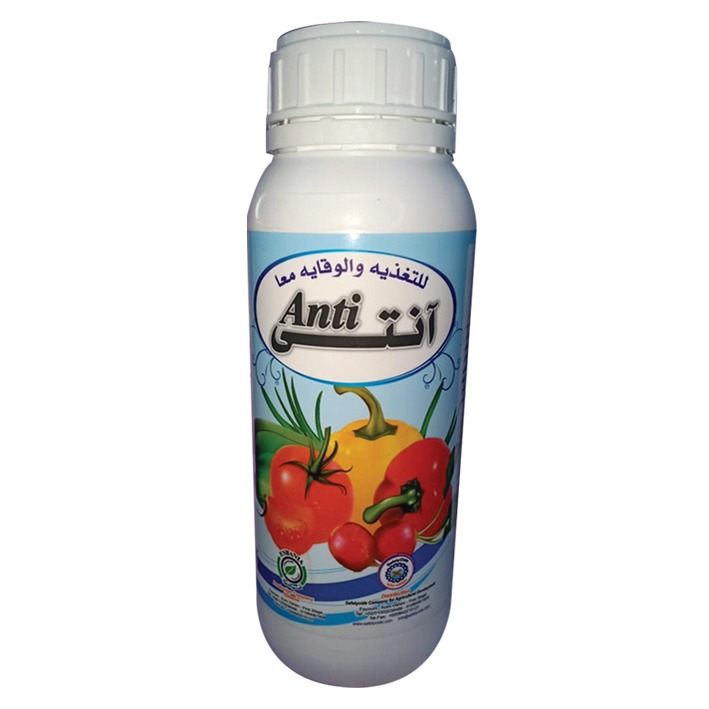
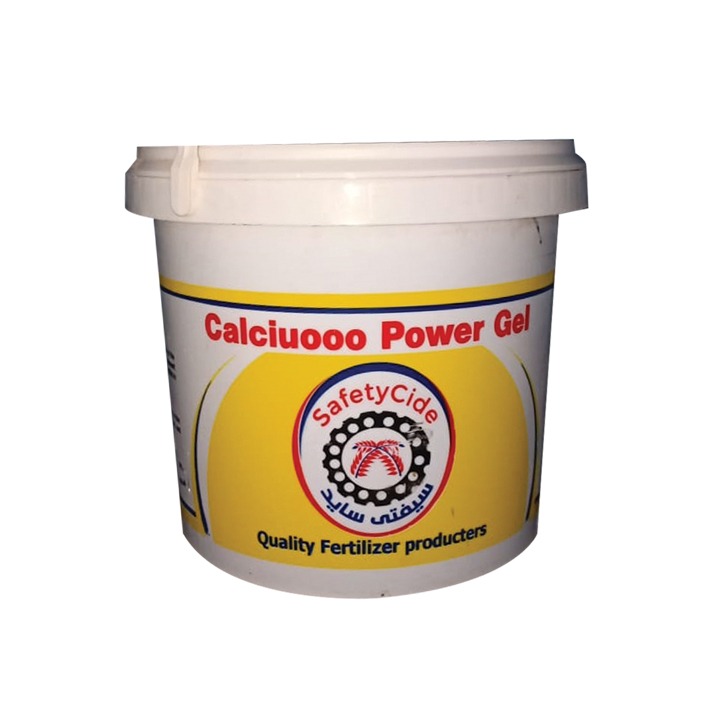


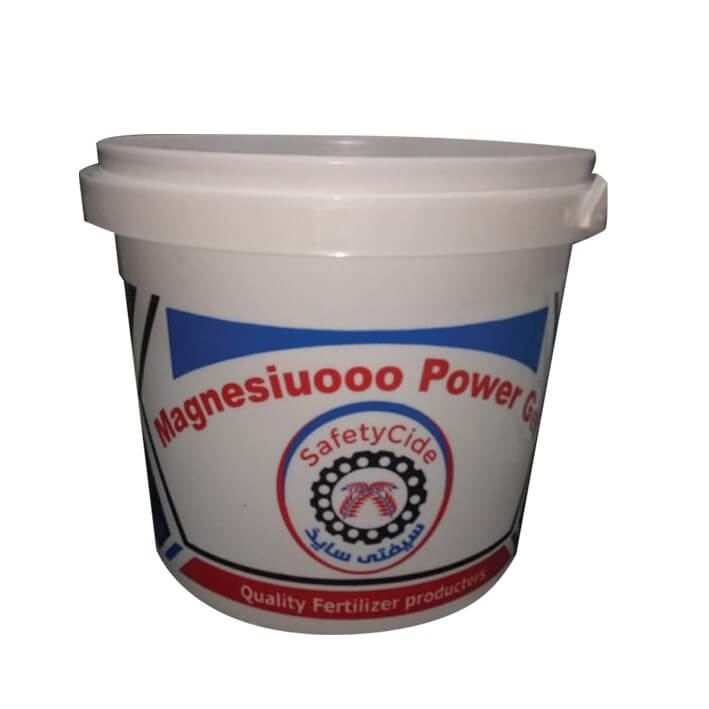




Reviews
There are no reviews yet.